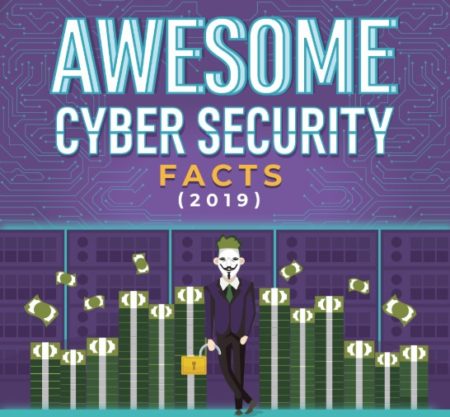August 7, 2019 – Meet Vasilii Chekalov, a computer geek who also likes working out in the gym. A citizen of Ukraine, he lives in Lviv, devours information on digital marketing and outreach, and growth hacking strategies. With his article he has created a very interesting infographic that summarizes some very disturbing global cybersecurity facts. This is Chekalov’s first posting here at 21st Century Tech Blog and I invite readers to send their comments.
In the last couple of weeks, North Americans have learned about yet another massive hack. In this case, the target was Capital One whose servers were hacked back in March of this year exposing the data of 106 million customers. The hack was attributed to Paige Thompson, who believed it would prove her skills and lead to a job offer. Instead, it’s likely she will serve time in federal prison.
What is frightening about her actions, is regardless of her intentions, Thompson exposed a major security flaw in one of America’s biggest banks. According to Matt Baker, founder of the cybersecurity firm EveryCloud, this was something that industry experts feared could happen for a very long time.
Considering that banks like Capital One have budgets to pay millions of dollars annually for state-of-the-art cybersecurity, what does it mean for the rest of us when it comes to our own vulnerability to hacks?
Privacy laws in North America place the onus on a business to secure client data. If it doesn’t it could face serious penalties and civil action. But small and medium businesses don’t have the millions to spend on security. So what can they do?
Take Proactive Action
For a start, it’s not enough to install an antivirus program and hope for the best. You can take other proactive steps to ensure your business is as hard a target as possible. This doesn’t guarantee that you’ll never get hacked, but the more difficult you make it for the hacker, the better your chances of warding off an attack. Businesses are not completely helpless when it comes to protecting themselves from hackers.
Follow these few steps and you can ward off hacks by people like Paige Thompson.
1. Change Your Passwords
Do you use the same password for every site you go to?
Have you changed your password in the last month?
Have you got a strong password?
Here are some password tips you should adhere to:
- A password should be at least 16 characters long.
- A randomly generated password that contains no recognizable words is better.
- A password should include special characters, a mix of upper and lower-case letters, and numbers.
- Your business password should be completely different from any other passwords you use.
2. Look into Security Awareness Training for Employees
Having a top antivirus program in place won’t do much good if your staff don’t know how to recognize and guard against different forms of attack. It’s good business practice to get professional assistance to train and test employees. Phishing emails sent from time to time will tell you if the training has worked.
3. Backup Data and Set Up a Recovery Plan
It’s best to assume that at some point your data will be hacked. That’s why it’s extremely important to do regular backups and to work out a recovery plan should your systems be compromised. That way, if something does happen, the damage can be limited.
By making cybersecurity a priority you’ll have a better chance of not experiencing a Paige Thompson in your future.
ᐧ










